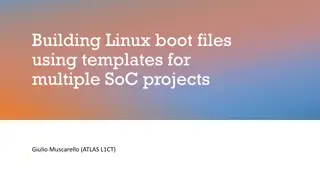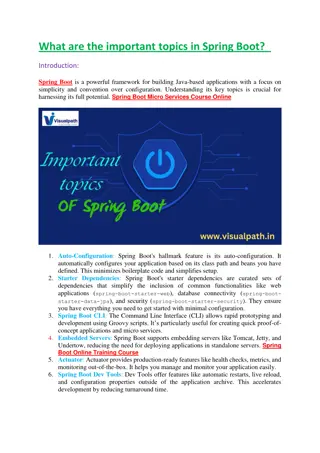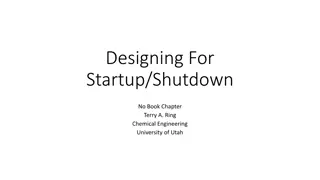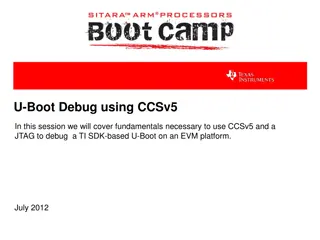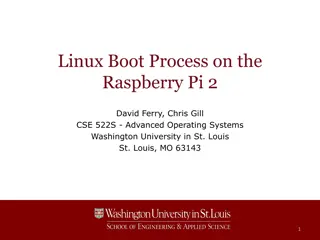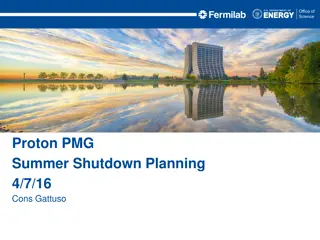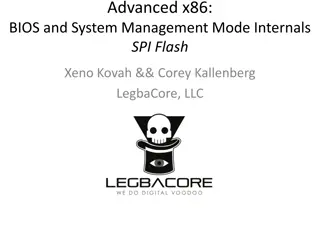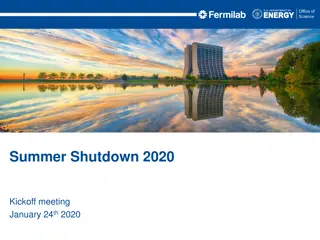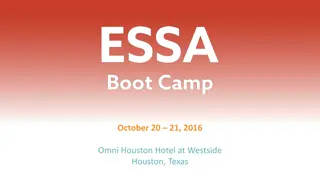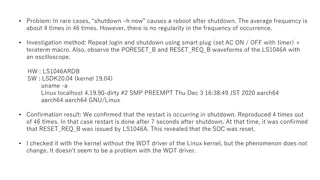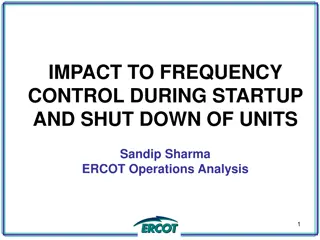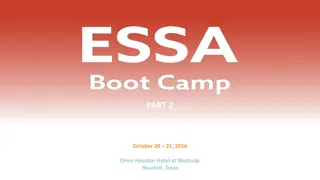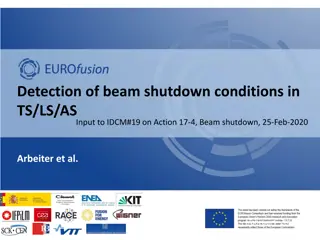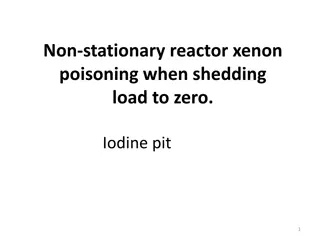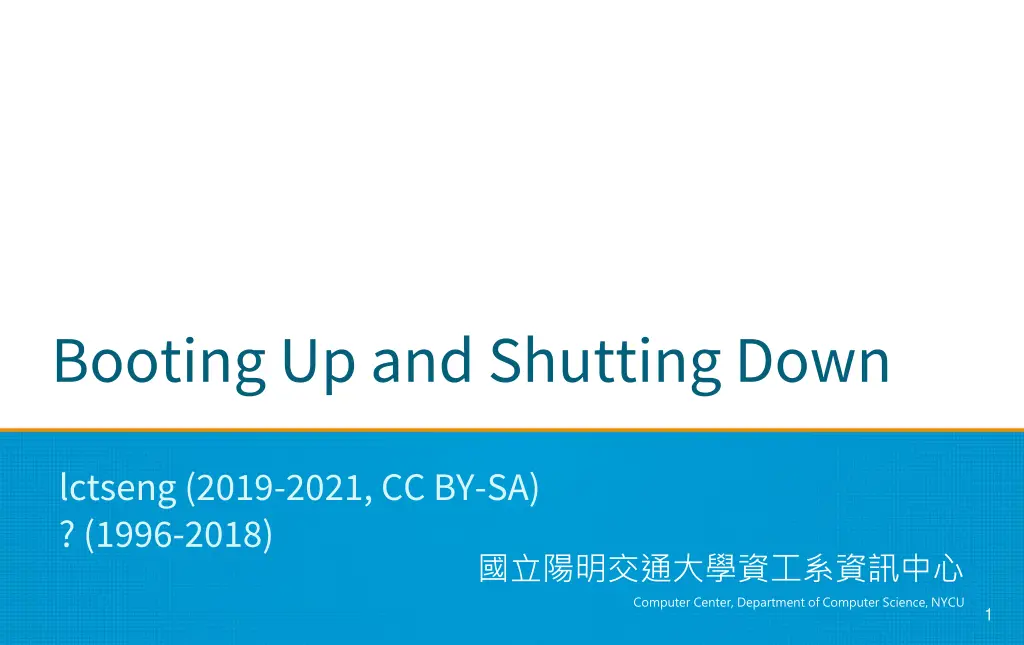
Understanding the Booting Process in FreeBSD Systems
Learn about the essential stages involved in the booting process of FreeBSD systems, including the functions of the Master Boot Record (MBR), boot loaders, and kernel initialization. Explore the sequence from powering on to loading the operating system kernel.
Download Presentation

Please find below an Image/Link to download the presentation.
The content on the website is provided AS IS for your information and personal use only. It may not be sold, licensed, or shared on other websites without obtaining consent from the author. If you encounter any issues during the download, it is possible that the publisher has removed the file from their server.
You are allowed to download the files provided on this website for personal or commercial use, subject to the condition that they are used lawfully. All files are the property of their respective owners.
The content on the website is provided AS IS for your information and personal use only. It may not be sold, licensed, or shared on other websites without obtaining consent from the author.
E N D
Presentation Transcript
Booting Up and Shutting Down lctseng (2019-2021, CC BY-SA) ? (1996-2018) Computer Center, Department of Computer Science, NYCU 1
Handbook and Manual pages Complete guide and be found at https://www.freebsd.org/doc/en/books/handbook/boot.html https://www.freebsd.org/doc/zh_TW/books/handbook/boot.html 2
Booting Overview -After Powering On BIOS (Basic Input/Output System) - stored on motherboard Find MBR in the bootable media (disk,cd,usb stick,...) MBR (Master Boot Record) - stored on the first sector of disk/media Record partition information of the disk Load boot loader in Boot Sector (prompt if multiple choices available) Boot Sector - stored in the each slice (outside of usual file system) Recognize FreeBSD file system. Find kernel loader under /boot Kernel loader - stored in main file system (all below) Show booting prompt and load selected kernel OS Kernel Initialize hardware/drivers Init Mount filesystem, acquire DHCP, start shell, ... 3
MBR Master Boot Record First 512 bytes of disk, outside the FreeBSD filesystem Last 2 Bytes are 0x55AA Corresponding copy in FreeBSD is /boot/boot0 or /boot/mbr nctucs [~] -lctseng- ls -l /boot/boot0 -r--r--r-- 1 root Wheel 512 Nov 12 2014 /boot/boot0 nctucs [~] -lctseng- ls -l /boot/mbr -r--r--r-- 1 root Wheel 512 Nov 12 2014 /boot/mbr nctucs [~] -lctseng- xxd /boot/mbr 00000000: fc31 c08e c08e d88e d0bc 007c be1a 7cbf .1.........|..|. 00000010: 1a06 b9e6 01f3 a4e9 008a 31f6 bbbe 07b1 ..........1..... 000001d0: 0000 0000 0000 0000 0000 0000 0000 0000 ................ 000001e0: 0000 0000 0000 0000 0000 0000 0000 0000 ................ 000001f0: 0000 0000 0000 0000 0000 0000 0000 55aa ..............U. 4
MBR Master Boot Record 466 bytes - code for booting 64 bytes - partition table Responsible to find the boot code on the boot sector of bootable slice. MBR Slice 1 (dev/ad0s1) F1 Win F2 FreeBSD Slice 2 (dev/ad0s2) Slice 3 (dev/ad0s3) Default: F2 Slice 4 (dev/ad0s4) boot0 Screenshot Slice 5 /dev/ad0s5 Slice 6 /dev/ad0s6 5
FreeBSD Booting Stages Stage 0 (MBR) /boot/mbr or /boot/boot0 Finds bootable partitions Stage 1 (Boot Sector) /boot/boot1 Limited to 512 byte. Only recognize bsdlabel. Find /boot/boot2 in somewhere of Boot Sector Stage 2 (Boot Sector) /boot/boot2 Find /boot/loader or load kernel directly Stage 3 (BSD file system) /boot/loader Show prompt and load kernel
Boot Stage One and Stage Two boot1 and boot2 (/boot/boot1 + /boot/boot2 = /boot/boot) In boot sector of given partition (outside of FreeBSD file system) They belongs to the same program, but divided into two parts because of space constraint Copied from /boot/boot Used to run the loader. MBR Slice 1 (dev/ad0s1) [Boot Sector] /boot/boot{1,2} [File System] loader, kernel >> FreeBSD/i386 BOOT Default: 0:ad(0,a)/boot/loader boot: Slice 2 (dev/ad0s2) ... Slice 3 (dev/ad0s3) ... boot2 Screenshot 7
Boot Stage Three Boot Stage Three: The loader Provide a user-friendly interface to configure booting choice. /boot/loader Wait for 10 seconds then autoboot Configuration Kernel options, kernel modules, boot delay, ... Default loader behavior User-defined loader behavior /boot/defaults/loader.conf /boot/loader.conf autoboot_delay="10" zfs_load="YES" /boot/loader.conf 8
Files in /boot/ /boot/mbr (Standard) Simplified version of boot0, blindly boot the partition marked active /boot/boot0 (BootMgr) bootmanager /boot/boot{1,2} = /boot/boot boot1 is very simple, since it can only be 512 bytes in size, and knows just enough about the FreeBSD bsdlabel, which stores information about the slice, to find and execute boot2. boot2 is slightly more sophisticated, and understands the FreeBSD file system enough to find files on it, and can provide a simple interface to choose the kernel or loader to run /boot/loader /boot/loader load the kernel from disk /boot/kernel/kernel 9
MBR recover If MBR is overwritten by MS (or others), and you want to replace it with FreeBSD MBR: Boot with CD or Floppy $ fdisk -B -b /boot/boot0 ad0 or boot0cfg -B /dev/ad0 -B means reinitialize the boot code contained in sector 0 of the disk -b is used to specify the boot code If you want to replace it with MS MBR Boot with DOS CD/floppy C:\fdisk /mbr 10
Single User Mode Similar to Windows "Safe Mode" Repair system Inconsistent file system Error in a boot configuration Reset lost root password Entering single user mode requires no password Full access to local file and configuration (root permission) No network access 11
Boot in single user mode OS Command FreeBSD Interrupt the boot loader and type "boot -s" Or type "2" in the menu Lilo: linux single Grub: append 'single' in the boot menu Linux Solaris Press "STOP" and "a" to enter the boot PROM and Press "boot -s" 12
Insecure single user mode Single user mode requires no password by default When the physical security to the console is considerable, set console to be insecure in /etc/ttys # name getty type status comments # # If console is marked "insecure", then init will ask # for the root password # when going to single-user mode. # console none unknown off secure console none unknown off insecure 13
Using Single User Mode Only the root partition is mounted and mounted as read only mount -u / Indicates that the status of an already mounted file system should be changed mount -a -t ufs (or other external types) Mount all file systems with specific type swapon -a Enable all swap 14
Multibooting (1) FreeBSD FreeBSD boot loader will try to detect bootable partitions You can also declare the bootable partitions explicitly with boot0cfg $ boot0cfg -B -m 0x7 ad0 -m means mask, Specify slices to be enabled/disabled, E.g. 0x7 means 0111,boot menu will detect slice 1~3 to show the options (and slice 4 is disabled) 15
Multibooting (2) default 0 timeout 30 fallback 1 Linux Using lilo or grub # For booting GNU/Linux title GNU/Linux kernel (hd1,0)/vmlinuz root=/dev/hdb1 # For booting FreeBSD title FreeBSD root (hd0,2,a) kernel /boot/loader # For booting Windows NT or Windows95 title Windows NT / Windows 95 boot menu root (hd0,0) makeactive chainloader +1 16
Steps in the boot process Loading and initialization of the kernel Device detection and configuration Creation of spontaneous system processes Execution of system startup scripts Multiuser operation 17
Steps in the boot process Kernel initialization Get kernel image into memory to be executed Perform memory test Allocate internal data structures of kernel OS Kernel Image Path FreeBSD /boot/kernel/kernel Linux /boot/vmlinuz Solaris /kernel/genunix SunOS /vmunix 18
Steps in the boot process Hardware configuration Devices specified in kernel configuration file Kernel will try to locate and initialize it Devices not specified in kernel configuration file Kernel tries to determine other information by probing the bus If the driver is missing or not responsible to the probe, device is disabled We can load kernel module to support this device. kldload, kldstat, kldunload /boot/kernel/*.ko if_em_load="YES" vboxdrv_load="YES" vboxnet_enable="YES" /boot/loader.conf 19
Steps in the boot process System Processes Spontaneous process Not created by the normal UNIX fork mechanism OS Pid 0 Pid 1 Pid 2 and more FreeBSD kernel init g_event kthreadd, kflushed,kupdate kpiod,kswapd Linux - init SunOS sched init pageout 20
Steps in the boot process Execution of startup scripts The startup scripts are selected and run by init Typical works are: Setting the name of the computer Setting the time zone Checking the disk with fsck Mounting the system's disks Removing files from /tmp directory Configuring network interface Starting up daemons and network services 21
Steps in the boot process Multiuser operation From now on, the system is fully operational, but no one can login init will spawn getty processes to listen for login PID 1 PID 563 exec init sh grep Fork Fork PID 424 exec PID 424 exec PID 424 exec init getty login sh 22
FreeBSD startup scripts The BSD-style booting init will run /etc/rc /etc/rc will reads the following configuration /etc/defaults/rc.conf /etc/rc.conf /etc/rc.d rc(8) 23
Ways to shutdown or reboot Turn off the power Please Don't Use the shutdown(8) command Or using the halt and reboot command halt = shutdown -h reboot = shutdown -r 24
Ways to shutdown or reboot shutdown command OS Pathname FreeBSD /sbin/shutdown Linux /sbin/shutdown Solaris /usr/sbin/shutdown -gsecs SunOS /usr/sbin/shutdown +mins Time time time Reboot -r -r -i6 -r Halt -h -h -i0 -h Single User Mode Skip Fsck -is -f Time format can be +m hh:mm => Linux yymmddhhmm => FreeBSD 25
Halt ? Poweroff ? Halt Terminate all processes, write data back to disks When everything is ready, tell user to turn off the power Or reboot by press any key In older systems, you need to manually do so 26
Poweroff Halt + Turn off the power ACPI / APM Advanced Configuration and Power Interface Advanced Power Management In FreeBSD 1. Try shutdown -p now 2. Compile this into kernel device apm0 at nexus?flag 0x20 3. Rebuild the kernel 4. Edit /etc/rc.conf apm_enable="YES" apmd_enable="YES" 5. Reboot 6. Try shtudown -p now (or poweroff) In case it does not work 27
Other Booting Manager Besides BSD-style booting, another line is System-V Used by many Linux distributions Solaris, Debian 28
System-V Startup Scripts Run-level /etc/inittab init follow the inittab from level 0 to level k Example: inittab in sun1 Run Level 0 1 2 3 4 5 6 Startup scripts /etc/rc.d/rc0.d/ /etc/rc.d/rc1.d/ /etc/rc.d/rc2.d/ /etc/rc.d/rc3.d/ /etc/rc.d/rc4.d/ /etc/rc.d/rc5.d/ /etc/rc.d/rc6.d/ Meaning Halt Single user mode Multiuser without NFS Full multiuser mode User defined Multiuser with graphical interface Reboot 29
Ways to shutdown or reboot telinit Only for SystemV systems (and Systemd) telinit: change run-level Halt/poweroff $ telinit 0 Reboot $ telinit 6 Single user mode $ telinit 1 30
Systemd Modern system/service manager for many Linux distributions Ubuntu, Debian, Evolved from System-V Another booting manager beside BSD Used by older versions of Linux distributions Debian < 8.0 : System-V Debian >= 8.0 : Systemd Similar to System-V, but faster and easier to use 31
Systemd Use 'targets' to replace run-levels SysV Run Level Systemd targets Meaning runlevel0.target, poweroff.target 0 Poweroff runlevel1.target, rescue.target 1 Single user mode runlevel2.target, multi-user.target 2 User defined. Default: same as level 3 runlevel3.target, multi-user.target 3 Multiuser mode runlevel4.target, multi-user.target 4 User defined. Default: same as level 3 runlevel5.target, graphical.target 5 Multiuser with graphical interface runlevel6.target, reboot.target 6 Reboot 32

